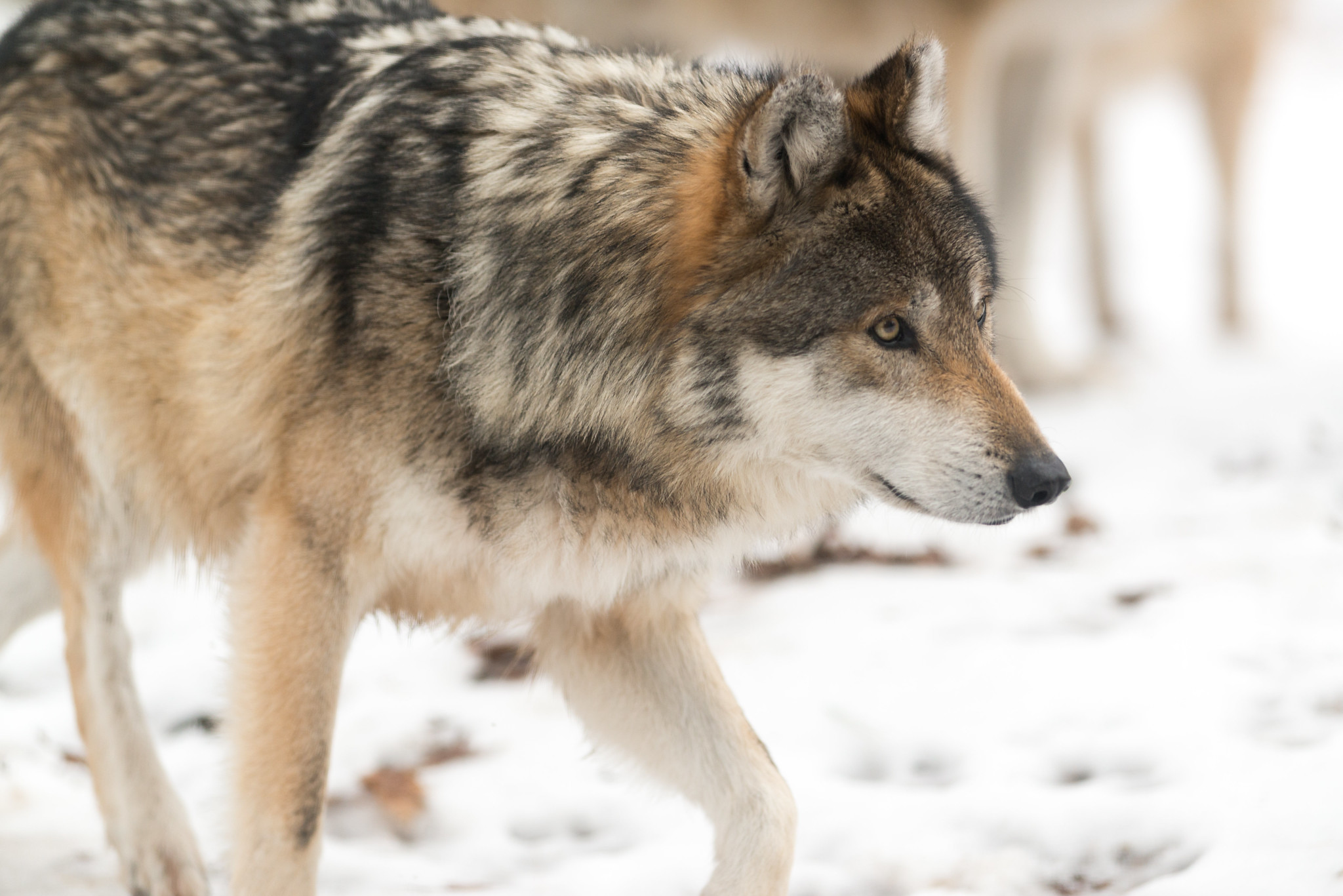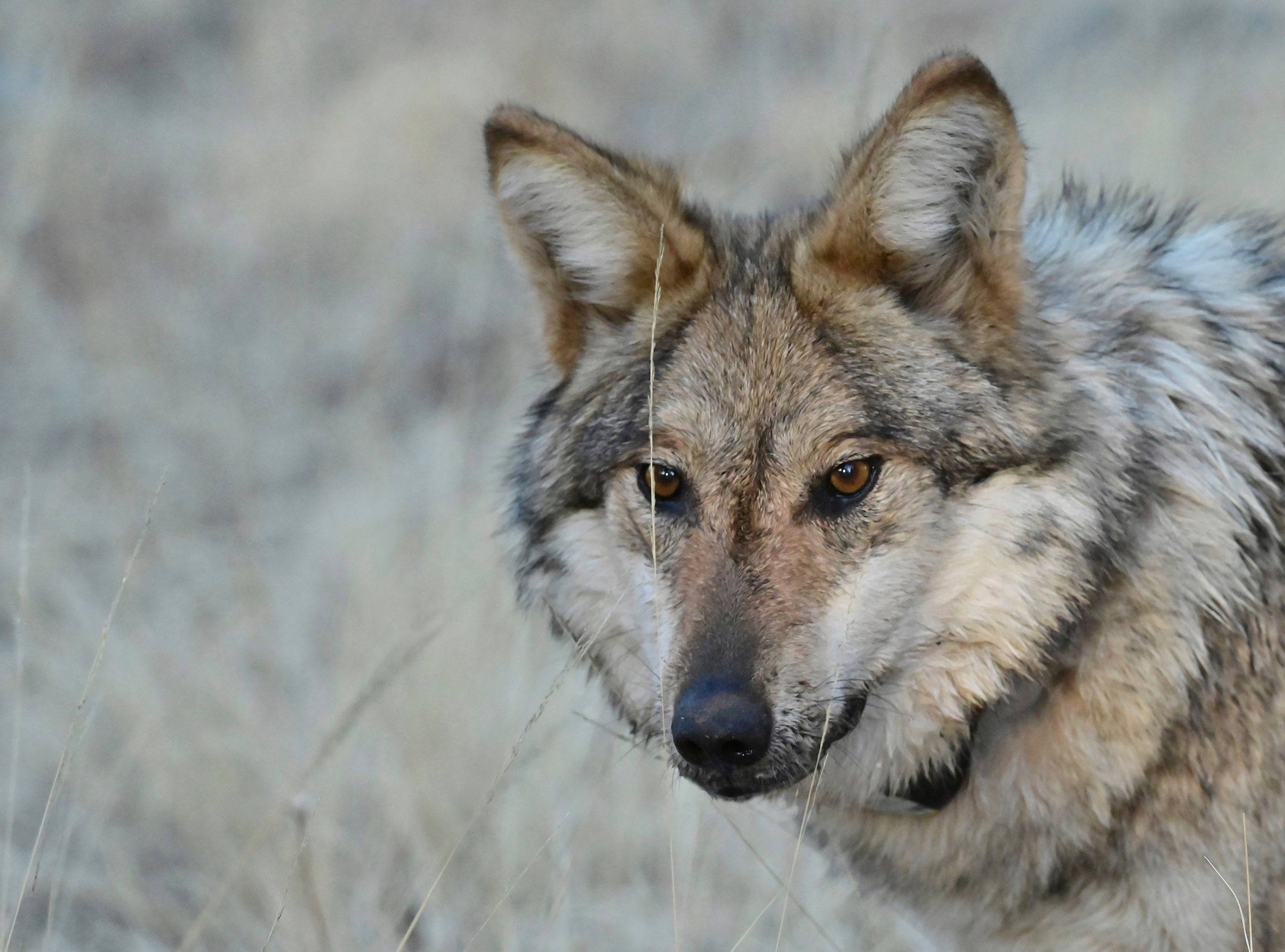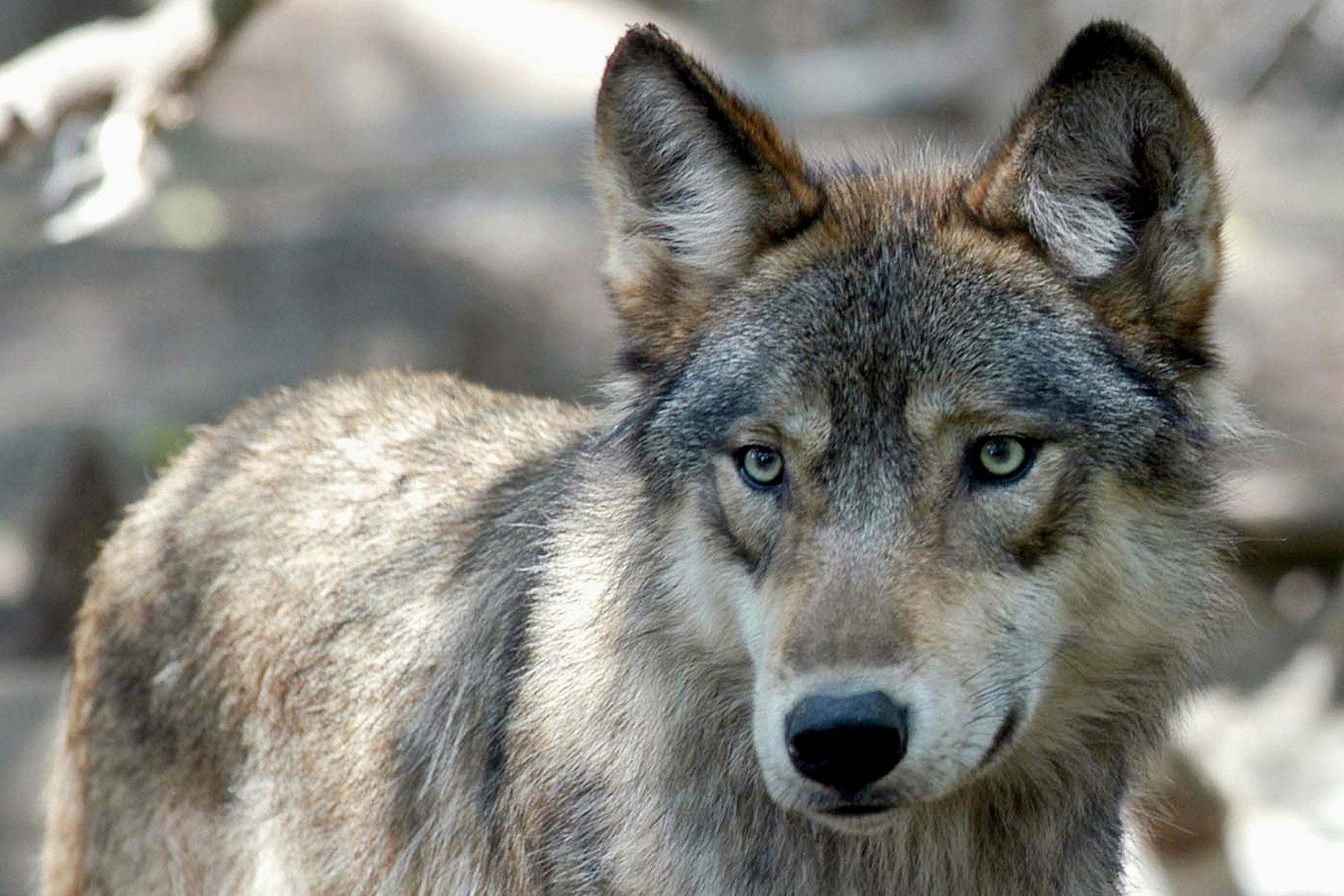Wisconsin’s wolf population fell around 14 percent to 972 wolves following last year’s controversial wolf hunt, according to the Wisconsin Department of Natural Resources.
The agency released the figures during Wednesday’s Wisconsin Natural Resources Board meeting.
The DNR originally planned to hold a hunt in November 2021, but Kansas-based Hunter Nation sued the agency to force the hunt to be earlier in February 2021. A Jefferson County judge ordered state wildlife managers to hold a season that month, during which hunters killed 218 wolves in less than three days.
News with a little more humanity
WPR’s “Wisconsin Today” newsletter keeps you connected to the state you love without feeling overwhelmed. No paywall. No agenda. No corporate filter.
The agency estimates the wolf population is between 812 and 1,193 wolves following the wolf hunt, noting 972 wolves is the most likely estimate. Randy Johnson, DNR large carnivore specialist, said data indicates the state’s wolf population is stable.
“Despite that observed decline in wolf population abundance, there are several biological indicators that continue to indicate that the Wisconsin wolf population is healthy, biologically secure in the state,” Johnson told the board.
While the population declined, Johnson said the estimated number of wolf packs changed very little, but the size of packs decreased. Even so, Johnson said that’s consistent with previous wolf hunts and noted distribution of wolves saw little change. Prior to the February wolf hunt, the DNR estimated the state had roughly 1,100 wolves — that’s four times higher than the state’s wolf population in 2000.
Farmers, hunters, and NRB members have argued there are far too many wolves in the state, citing attacks on pets and livestock as a reason to control their numbers. The DNR verified 108 of 182 reported wolf conflicts last year. The number of livestock killed by wolves represents a fraction of the 3.5 million cattle in Wisconsin.
Board member Bill Bruins and DNR staff said the state’s population estimate shows the February hunt didn’t decimate wolves as opponents feared.
“The board took a lot of heat over that, and I just wanted to clear the air on that — that the sky didn’t fall entirely with that February hunt,” Bruins said.
Wisconsin tribes, wolf advocates, and conservationists called the 2021 hunt a slaughter of wolves and slammed the DNR for failing to properly manage the season. State-licensed hunters harvested around 100 more wolves than they were allowed under a 200-wolf quota split with Ojibwe tribes.
The DNR has said the number of wolves killed was near the overall harvest quota and cited difficulties managing the hunt due to state law that requires 24-hour notice before closing the season.
The state planned to hold a second hunt last November, when the first hunt was originally scheduled to happen, but a Dane County judge placed that season on hold. Just months later, a federal judge restored protections for gray wolves across most of the country in February.
The DNR’s model for estimating the wolf population
The DNR used an occupancy model that relies on average pack and pack territory sizes. The agency used data from GPS-collared wolves and around 500 winter track surveys covering nearly 17,000 miles to estimate the area occupied by wolves, size of packs, and size of their average territory.
The agency estimated their average home range was 66-square-miles using data from 41 collared wolves over the last two winters. The number of wolf packs is estimated between 243 and 352 with a most likely estimate of 292 packs. That’s down from 288 packs the previous winter. Johnson said average pack size decreased from 3.8 to 3.2 during that time.
Adrian Treves, a professor of environmental studies at the University of Wisconsin-Madison, is wary of the state’s estimate.
Treves has questioned the DNR’s use of the model and fears the agency is overestimating the number of wolves. He noted the agency used data from surveys within 100-square-kilometer blocks to estimate the total area occupied by wolves. But, Treves said the state estimated average pack sizes based on their home range within 171-square-kilometer blocks.
“That means their grid cells are almost half of what a wolf pack territory is,” Treves said. “So, there’s a real risk that when they say two neighboring cells are occupied that they’re counting two packs where there’s only one.”
Treves also took issue with the DNR assuming areas have wolf packs even if they weren’t detected based on the probability of wolves there due to land cover characteristics. But according to the DNR, the model also considers their surveys and only estimates wolves in areas where they have evidence of pack activity. The agency added it tested the model for multiple years prior to implementing it in 2020, saying it was published in a peer-reviewed scientific journal.
“The DNR does stand behind our methods. We do feel that we’re providing reliable, robust results,” said Jennifer Price Tack, the agency’s large carnivore and elk research scientist.
Treves urged the DNR to share its raw data, so it can be independently reviewed. Price Tack said that data is protected, but anyone can request it. She added there’s no evidence to support claims the agency’s population estimate is high or low.
A former DNR wolf biologist, Adrian Wydeven, said the agency’s estimate is in line with what he expected. Wydeven added it’s reasonable that wolves won’t be detected in every survey.
“If the attempt is to try to accurately estimate the actual number of animals on the landscape, you do need to account for the fact that people are not perfect in their ability to detect wolves, so having some measure in there recognizing that areas are occupied,” said Wydeven, who is also co-chair of the wildlife work group for Wisconsin’s Green Fire.
Wisconsin Public Radio, © Copyright 2026, Board of Regents of the University of Wisconsin System and Wisconsin Educational Communications Board.



